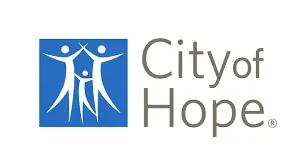
Trastuzmab Plus Pertuzumab Targets ERBB2/ERBB3 in Uterine Tumors

In an interview with Targeted Oncology, Eugene Ahn, MD, reviewed the data from the uterine cancer cohort of the TAPUR study and explained the implications of the findings.
In the existing treatment landscape for gynecologic cancers, there are multiple FDA-approved targeted therapies for the treatment patients with various mutations and amplifications. Rare alterations like ERBB2 or ERBB3 amplification, overexpression, or mutation do not have FDA indications, and therefore oncologists treating these patients lack effective options.
The phase 2 TAPUR study is a registry protocol (NCT02693535) that allows patients to access therapies with indications in other diseases. Patients with either non-Hodgkin lymphoma, multiple myeloma, or advanced solid tumors are included in the study and divided into 18 cohorts based on their disease and the treatment regimen they are receiving.
In cohort 8, patients with ERBB2 amplification or overexpression, and specific ERBB2 mutations receive trastuzumab (Herceptin) in combination with pertuzumab (Perjeta) at the standard FDA-approved dose. The primary end point being evaluated in this study is the objective response rate, and the secondary end point is overall survival.
Data from the uterine cancer cohort were recently presented during the 2021 American Society of Clinical Oncology (ASCO) Annual Meeting.
In an interview with Targeted Oncology, Eugene Ahn, MD, the deputy medical director of Clinical Research at Cancer Treatment Centers of America in Chicago, reviewed the data from the uterine cancer cohort of the TAPUR study and explained the implications of the findings.
TARGETED ONCOLOGY: What is the prognosis of uterine cancer given the agents available to treat these patients today?
We know that uterine cancer, when it's metastatic, is considered not realistic to cure with conventional therapy. There’s always a need for targeted agents and options that go beyond just chemotherapy. That's the reason we explored the TAPUR study and had an arm dedicated to endometrial cancer with ERBB2 mutations, or amplification, as well as ERBB3.
Can you provide background on the TAPUR study? What was the rationale and how was the study conducted?
The TAPUR trial is a very innovative basket study, which includes numerous drugs that are already FDA approved for specific cancer indications and [is designed]to speed advancement of knowledge, and awareness of where these agents can be used in others cancer types. [This is an alternative to] doing the laborious process of getting a randomized control trial for each indication. This allowed patients to get immediate access to an FDA-approved drug for an eligible mutation that we discovered from doing genomic profiling on their metastatic breast cancer.
The nice innovation here is that there is no randomization. The patients directly get free access to the study drug. This allowed us to get very great engagement with the patients because they knew they were going to get the study drug; they weren't going to get randomized to placebo. So, I found that was a very strong element of patient-friendly design that led to its success.
Over the last few years, we've been reporting each cohort when it has complete data to report. So, this is one of the many cohorts that we've had, and I did describe some of the previous cohorts that we have reported regarding the same drugs trastuzumab and pertuzumab, which is the cohort that we're discussing.
How was this study conducted? What results were presented at this year’s ASCO meeting?
The treatment was trastuzumab at the standard FDA-approved dosing for ERBB2-positive breast cancer. The strategy was trastuzumab at an initial dose of 8 milligrams per kilo given intravenously over 90 minutes. Then, pertuzumab was also given as a loading dose of 840 milligrams intravenously, and then the standard maintenance dose every 3 weeks.
The study was designed to test the null hypothesis that the patients would have adequate disease control, defined as a partial response, complete response, or stable disease after 16 weeks of follow-up. According to our hypothesis, it was null, it would have a 15% response rate, and if it was positive, we would see a 35% response rate, which would give us a power of 85%.
We enrolled 28 female patients, and they were all evaluable. Twenty-two patients had tumors with ERBB2 amplification or expression. Four had ERBB2 mutations, and 1 tumor had ERBB3 amplification, 1 tumor had both ERBB2 amplification and mutation. In total, we had 2 partial responses and 7 patients with stable disease at 16 weeks in this cohort. So, that's a, total of 9 patients who qualified as a response. The study passed the initial set of criteria, and so the null hypothesis was rejected. The conclusion was that trastuzumab/pertuzumab does have significant activity and this cohort population.
What are the implications of these results?
As a further investigation, we know that a study of trastuzumab monotherapy had a negative result, so it’s significant that we're getting a positive signal here with the trastuzumab and pertuzumab.
Reference:
Ali-Ahmad HM, Rothe M, Mangat PK, et al. Pertuzumab plus trastuzumab (P+T) in patients (Pts) with uterine cancer (UC) with ERBB2 or ERBB3 amplification, overexpression or mutation: Results from the Targeted Agent and Profiling Utilization Registry (TAPUR) study. J Clin Oncol. 2021;39(suppl 15: abstr 5508). doi:









































